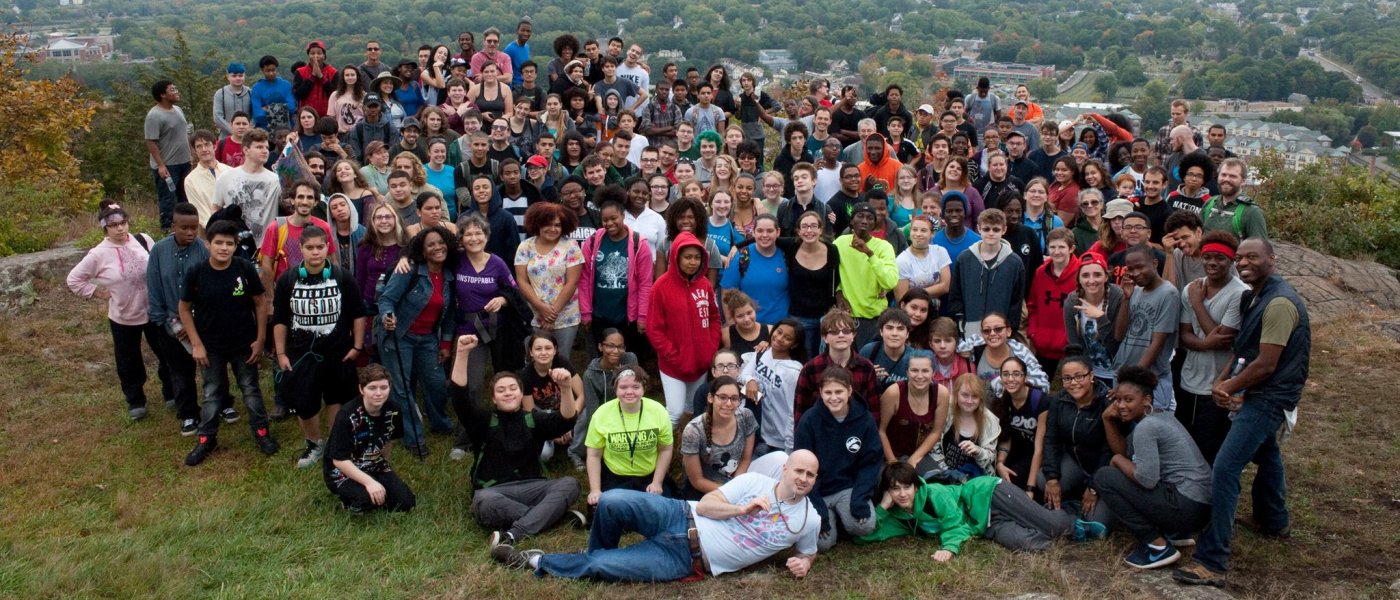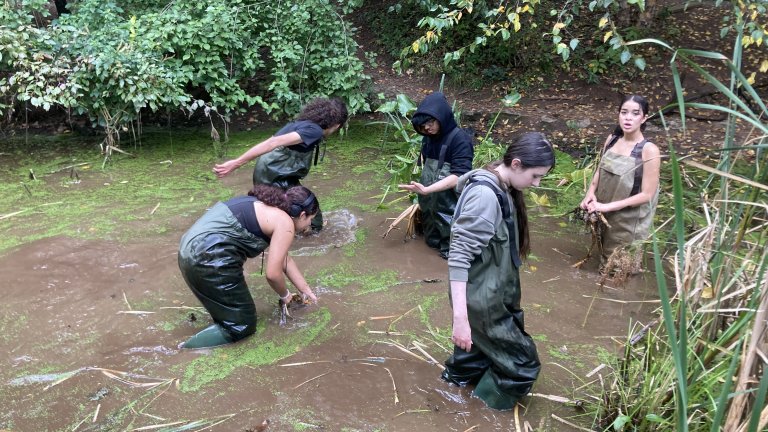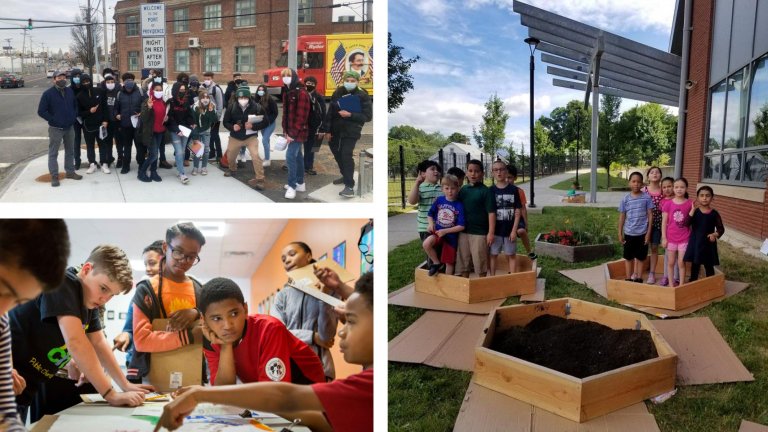Common Ground High School -- the nation's longest-running environmental charter school -- is committed to growing a new, more diverse generation of successful college students and powerful environmental leaders. Common Ground uses three sites as laboratories for learning: the urban farm that is the school’s campus, the natural environment of the adjacent West Rock Ridge State Park, and the urban setting of New Haven, Connecticut. Close study of these places develops understanding of local and global issues. Through this study and core academic work, students experience a rigorous high school curriculum that prepares them for competitive colleges, meaningful careers, and purposeful lives.
Common Ground High School is one part of a community non-profit, which also operates an urban farm and community environmental education center on 20 acres of city park land.
Common Ground strives to use the City of New Haven as its classroom, and to build a school that's part of and responsive to that city. Our students come from every one of the city's neighborhoods, as well as from 14 surrounding town.





